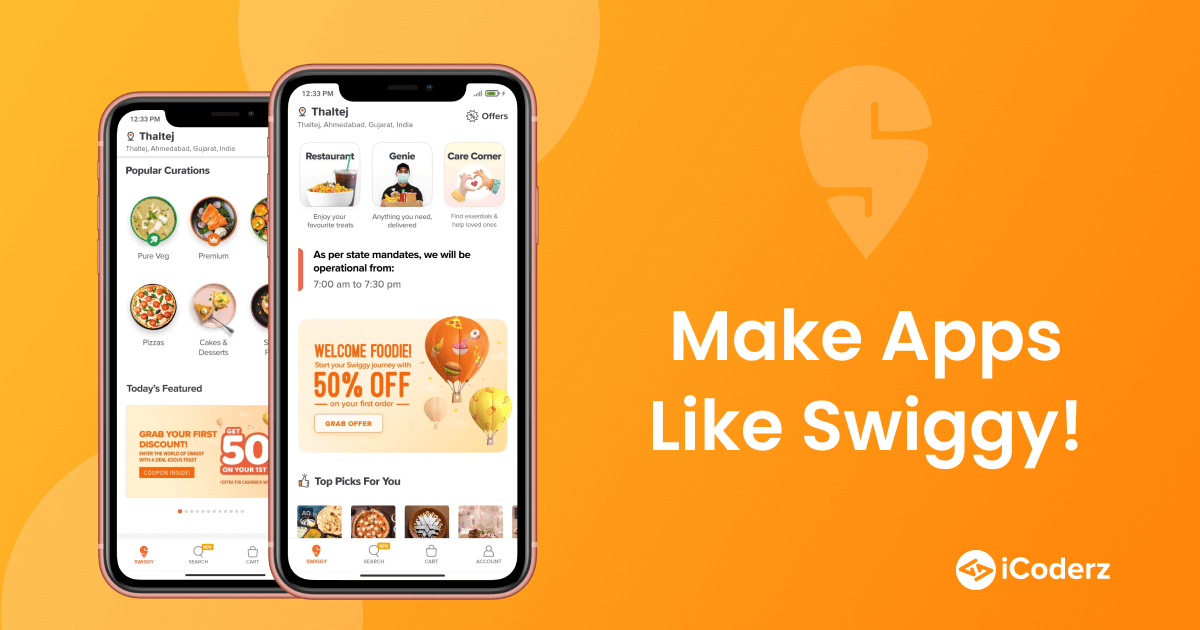Grocery Delivery Apps: Transforming The Way We Shop For Food
Like numerous other parts of our daily lives, grocery shopping has changed with the digital revolution. We can now order groceries, stock our refrigerators and pantries without ever leaving our houses, only with a tap of a finger. This article explores the development of grocery delivery apps and their impact on human purchase behavior.

The Convenience Revolution
Grocery delivery apps have quickly become essential tools for many households, offering:
- Wide selection of products from multiple stores
- User-friendly interfaces for easy browsing and ordering
- Scheduled and same-day delivery options
- Contactless payment and delivery
- Exclusive deals and discounts
The Need for Speed:
In our incredibly hectic lives, time is a valuable asset. Fast delivery has become a key selling point for several shopping apps. Consumers now expect their orders to arrive fast, usually within hours of ordering them. This demand for speed has led to advancements in transportation and storage management.
Choosing the Right Platform:
With various alternatives available, finding the proper fast delivery app might be intimidating. The finest apps offer a combination of speed, reliability, and a wide product selection. Many apps now claim delivery periods as short as 30 minutes for vital items, catering to last-minute requirements and impulsive purchases.
The Online Grocery Boom:
The move to online apps has been fantastic. More folks than ever are choosing to buy their groceries online, a trend prompted by recent world events. This development has forced traditional supermarkets to respond quickly, with many building their delivery systems to compete with dedicated apps.
Simplifying the Shopping Process:
One key advantage of grocery delivery apps is the possibility of getting groceries from the convenience of your home or office. This convenience removes the need for time-consuming journeys to the store, allowing customers to compare prices, read reviews, and make informed judgments about their purchases.
The Rise of Instant Gratification:
Taking fast delivery to the extreme, some platforms now offer grocery instant delivery services. These ultra-fast options promise to deliver a limited selection of essential items in as little as 10-15 minutes. While not suitable for large weekly shops, these services cater to urgent needs and last-minute meal planning.
Impact on Local Businesses:
While big companies have quickly adapted to the digital economy, independent grocers and niche retailers have also discovered potential in the delivery app ecosystem. Many smaller businesses have developed their apps or teamed with delivery systems to appeal to a larger market and challenge bigger stores.
Challenges and Considerations:
Despite the many benefits, the rise of grocery delivery apps has brought challenges:
- Increased competition among retailers
- Pressure on profit margins due to delivery costs
- Concerns about product freshness and quality
- Environmental impact of packaging and frequent deliveries
The Future of Grocery Shopping:
As tech continues to develop, we expect grocery delivery apps to expand further, potentially incorporating:
- AI-powered shopping lists that predict your needs
- Augmented reality to visualize products in your home before purchasing
- Integration with smart devices for automated ordering
- Sustainable packaging and delivery solutions
- Personalized nutrition recommendations based on shopping habits
Conclusion:
Grocery delivery apps have transformed our kitchens by offering unmatched convenience and choice. Our groceries are just a few taps away now, from weekly family shopping to last-minute ingredient trips. These apps are redefining our connection with grocery shopping as they keep innovating, not only delivering food. Food retail’s future seems to be digital, with countless opportunities to improve our purchasing experiences from the comfort of our homes.

